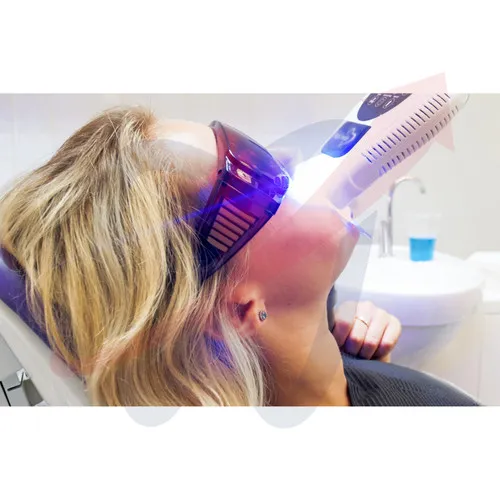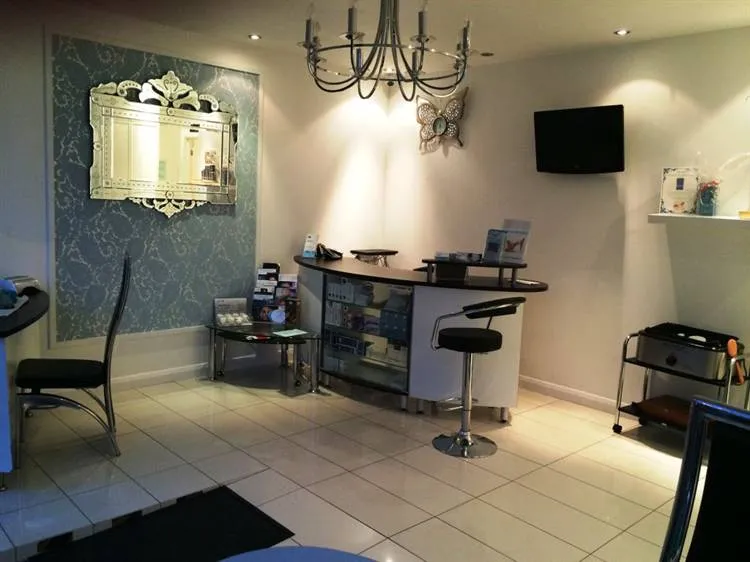The Essentials of Starting a Teeth Whitening Business
Embarking on the journey of starting a teeth whitening business can be an exciting venture, offering a high-demand service in the beauty and wellness industry. The appeal of a brighter, more confident smile drives a consistent stream of clients seeking professional teeth whitening solutions. However, success in this competitive market requires careful planning, strategic execution, and a commitment to quality. This guide provides the top 7 tips to help you navigate the process, from initial market research to building a loyal customer base, ensuring your business thrives. Whether you are a dental professional, a beauty enthusiast, or an entrepreneur looking for a lucrative opportunity, these insights will equip you with the knowledge needed to establish and grow a successful teeth whitening business.
1. Market Research and Business Planning
Before diving into the specifics, thorough market research and a well-defined business plan are crucial. This initial phase sets the foundation for your business, guiding your decisions and ensuring you’re catering to a real demand. A solid understanding of your target market, the competitive landscape, and your unique selling propositions will be invaluable as you start. This proactive approach minimizes risks and maximizes your chances of long-term success. Don’t skip this important step; it will pay off in the end!
Identifying Your Target Audience

Understanding your target audience is the first step. Who are you trying to reach? Consider demographics, age groups, income levels, and lifestyle preferences. Are you focusing on young professionals, busy parents, or individuals seeking to improve their appearance for special events? Knowing your audience allows you to tailor your services, pricing, and marketing efforts for maximum impact. This specificity helps you resonate more effectively with potential clients and attract those most likely to use and value your services. Identify their needs and adjust your business to meet them.
Analyzing the Competition
Next, analyze your competition. Identify existing teeth whitening businesses in your area. What are their strengths and weaknesses? What services do they offer? How do they price their services? What are their marketing strategies? Understanding your competitors allows you to differentiate your business and identify opportunities for growth. This could be through offering superior customer service, specialized treatments, or competitive pricing. Careful analysis will give you a significant advantage as you plan and then execute your business strategy.
Developing a Business Plan
With research in hand, create a comprehensive business plan. Outline your business goals, strategies, and financial projections. Include details such as your service offerings, marketing plan, operational procedures, and financial forecasts. This plan will serve as your roadmap, guiding your decisions and helping you secure funding if needed. Regularly reviewing and updating your business plan ensures you stay on track and adapt to changing market conditions. A well-structured plan is vital for business success; don’t underestimate the value of a detailed and accurate plan.
2. Regulatory Compliance and Legalities

Navigating the legal and regulatory landscape is a crucial step. Non-compliance can lead to fines, legal issues, and damage to your reputation. Ensuring you meet all requirements from the start protects your business and gives clients peace of mind.
Obtaining Necessary Licenses and Permits
Research and obtain all required licenses and permits to operate legally. This may include a business license, health permits, and any specific licenses required for providing teeth whitening services in your area. Requirements vary by location, so consult with your local authorities to ensure you are compliant. Make sure you understand what is expected of you before starting your business. Keeping records of all compliance documents is important, and it makes it easier to keep up with renewals.
Understanding Insurance Requirements
Secure adequate insurance coverage to protect your business from potential liabilities. This typically includes professional liability insurance, also known as malpractice insurance, to cover potential claims from clients. Consider also general liability insurance to protect against accidents or injuries on your premises. Additionally, ensure you have property insurance to protect your equipment and space. Review your policies annually and adjust coverage as needed to adequately protect your business. Insurance is vital for risk management and peace of mind.
Ensuring Compliance with Health and Safety Standards

Adhere to strict health and safety standards to protect both your clients and your team. This includes proper sanitation protocols, sterilization of equipment, and adherence to all relevant health regulations. Staff training on infection control procedures is essential. Keep up-to-date on any new or revised health and safety guidelines. Displaying a commitment to these standards builds client trust and ensures the well-being of everyone involved. Your commitment to health and safety shows that you care about your clients and your business.
3. Choosing the Right Location and Setting Up Your Space
The physical space of your business plays a vital role in attracting clients and ensuring a comfortable experience. A well-chosen location and a professionally designed space communicate quality and care. It will make your clients feel good about visiting your business. Whether you’re considering a standalone clinic, a space within an existing business, or a mobile service, careful consideration is vital.
Selecting a Suitable Location
Choose a location that is easily accessible and visible to your target audience. Consider high-traffic areas, proximity to other businesses, and ample parking. Assess the demographics of the area to ensure alignment with your target market. Look for a space that is well-maintained, clean, and offers a professional appearance. If you plan to offer mobile services, ensure you have the necessary permits and can operate in your chosen areas. Evaluate different factors, such as rent, utilities, and local regulations, to ensure the location fits your business needs.
Designing and Equipping Your Treatment Room

Design your treatment room with a focus on comfort, hygiene, and functionality. Invest in comfortable dental chairs, appropriate lighting, and sterilization equipment. Create a relaxing atmosphere with calming colors, soothing music, and a clean, organized space. Ensure the room is well-ventilated and complies with all relevant health and safety regulations. The space should be inviting and reflect the professional image of your business. Your treatment space should be a safe and relaxing environment.
Creating a Welcoming Atmosphere
Create a welcoming atmosphere that makes clients feel comfortable and relaxed. The waiting area should be clean, comfortable, and aesthetically pleasing. Offer refreshments, reading materials, and Wi-Fi to enhance the client experience. Your staff should be friendly, professional, and attentive to client needs. A positive and inviting environment will encourage repeat business and positive word-of-mouth referrals. The more inviting the atmosphere, the more likely people are to come back to you and recommend you to others.
4. Sourcing High-Quality Products and Equipment
The quality of your products and equipment directly impacts the effectiveness of your treatments and the satisfaction of your clients. Selecting reliable suppliers and investing in top-notch equipment is essential for delivering excellent results and building a strong reputation. It will also contribute to your own peace of mind.
Identifying Reliable Suppliers

Research and identify reputable suppliers of teeth whitening products and equipment. Look for suppliers with a proven track record of quality, reliability, and excellent customer service. Consider factors such as product certifications, safety standards, and customer reviews. Compare prices, shipping costs, and payment terms. Building strong relationships with your suppliers ensures a consistent supply of high-quality products and support. Reliable suppliers will keep you stocked and informed about any new developments or innovations in the industry. The quality of your supplies is critical.
Selecting Effective Teeth Whitening Products
Choose teeth whitening products that are safe, effective, and meet industry standards. This includes selecting products with appropriate concentrations of hydrogen peroxide or other whitening agents. Ensure your products are compliant with all local regulations and approved for professional use. Consider offering a range of whitening options to cater to different client needs and preferences. Always follow the manufacturer’s instructions and adhere to safety guidelines. Effective products produce better results and higher satisfaction levels for your clients. The proper use of high-quality products and equipment are crucial for successful outcomes.
Investing in Professional Equipment
Invest in professional-grade equipment, such as whitening lamps, dental chairs, and sterilization equipment. This equipment should be reliable, durable, and designed for professional use. Regular maintenance and calibration of your equipment are essential to ensure optimal performance. Consider investing in the latest technologies to offer cutting-edge treatments. High-quality equipment not only improves treatment outcomes but also enhances the overall client experience. Your equipment reflects your level of commitment to quality and professionalism. By keeping up-to-date, you will be more competitive.
5. Marketing and Client Acquisition Strategies

Effective marketing is crucial for attracting new clients and building a successful teeth whitening business. Developing a well-crafted marketing plan and implementing targeted strategies will help you reach your target audience and generate leads. It takes thoughtful planning.
Developing a Marketing Plan
Develop a comprehensive marketing plan that outlines your goals, strategies, and budget. Define your target audience, identify your key marketing messages, and select the most effective marketing channels. Set clear, measurable goals and track your progress. Regularly review and adjust your marketing plan to optimize your results. A well-defined plan ensures your marketing efforts are focused and effective. Include a budget for different marketing methods.
Utilizing Social Media and Online Platforms
Leverage social media platforms and online channels to reach your target audience. Create engaging content, such as before-and-after photos, videos, and informative posts about teeth whitening. Use platforms like Instagram, Facebook, and TikTok to showcase your services, build brand awareness, and interact with potential clients. Run targeted advertising campaigns to reach specific demographics and interests. Regularly update your online presence and respond to inquiries promptly. Make sure all your content looks professional and informative. The use of social media is an important way to attract new clients.
Implementing Effective Advertising Campaigns
Implement effective advertising campaigns to generate leads and drive traffic to your business. This could include online advertising, such as Google Ads and social media ads, as well as traditional advertising methods, such as print ads, local radio spots, and partnerships with local businesses. Track the performance of your ads and optimize your campaigns for the best results. Offer promotions, discounts, and special offers to attract new clients. Your success depends on how good you are at advertising to your target audience. Make your ads visually appealing.
6. Pricing Strategies and Financial Management
Sound financial management is essential for the long-term success of your teeth whitening business. Developing a pricing strategy that reflects the value of your services and effectively managing your finances will contribute to your profitability and sustainability. This will give your business longevity.
Determining Your Pricing Structure
Develop a pricing structure that is competitive yet profitable. Consider the cost of your products, equipment, rent, labor, and marketing expenses. Research the pricing of your competitors to understand market rates. Offer a range of pricing options to cater to different budgets and treatment needs. Consider offering packages or promotions to increase sales. Clearly communicate your pricing to clients and provide transparent information about the cost of each service. Being transparent and easy to understand is a great way to keep clients happy and coming back.
Managing Your Finances and Budgeting
Implement effective financial management practices to track your income, expenses, and cash flow. Use accounting software to manage your finances and generate financial reports. Create a budget and monitor your spending to ensure you stay within your financial goals. Regularly review your financial performance and make adjustments as needed. Seek professional advice from an accountant or financial advisor. Smart budgeting will help your business succeed.
Understanding Profit Margins
Understand your profit margins to assess the financial health of your business. Calculate your cost of goods sold (COGS) and your gross profit. Determine your operating expenses and your net profit. Analyze your profit margins to identify areas where you can improve efficiency and profitability. Regularly review your pricing strategy to ensure you are maximizing your profit margins. Make adjustments to your pricing or services as needed. Monitor your profits closely to make informed decisions. Your profitability is the key to keeping your business successful.
7. Providing Excellent Customer Service and Building Client Loyalty
Providing excellent customer service is critical for building a loyal client base and generating positive word-of-mouth referrals. A positive customer experience will contribute to client satisfaction and attract new customers. This is a key factor in your success.
Creating a Positive Customer Experience
Create a positive customer experience by providing exceptional service from the moment a client contacts your business. Greet clients warmly, offer personalized consultations, and explain the teeth whitening process clearly. Be attentive to their needs and concerns throughout the treatment. Provide comfortable and relaxing surroundings. Ensure your staff is trained to be friendly, professional, and knowledgeable. A positive experience will leave clients feeling valued and satisfied. Go above and beyond their expectations.
Implementing a Customer Retention Strategy
Implement a customer retention strategy to keep clients coming back and to turn them into loyal advocates for your business. Offer loyalty programs, exclusive discounts, and incentives for repeat business. Send follow-up emails or texts to check on their satisfaction. Encourage clients to refer new customers by offering referral bonuses. Stay in touch with your clients through newsletters, social media updates, and special promotions. Client retention is vital. It is easier and more cost-effective to keep a customer than to find a new one.
Gathering and Utilizing Customer Feedback
Gather and utilize customer feedback to improve your services and client satisfaction. Provide comment cards, online surveys, or informal feedback methods to collect client input. Actively listen to client concerns and address any issues promptly. Use feedback to identify areas for improvement and to tailor your services to meet client needs. Regularly analyze customer feedback to improve operations. Client feedback is extremely valuable.
In conclusion, launching a teeth whitening business involves careful planning, adherence to regulations, and a strong commitment to customer service. By focusing on market research, regulatory compliance, a professional environment, high-quality products, effective marketing, sound financial management, and exceptional customer service, you can increase your chances of success in the competitive teeth whitening market. Remember to adapt to market changes and continuously improve your services to maintain a thriving and profitable business. With dedication and a focus on excellence, your teeth whitening business has the potential to flourish. Follow these tips, and you will be well on your way to building a successful business and helping clients achieve brighter, more confident smiles.
